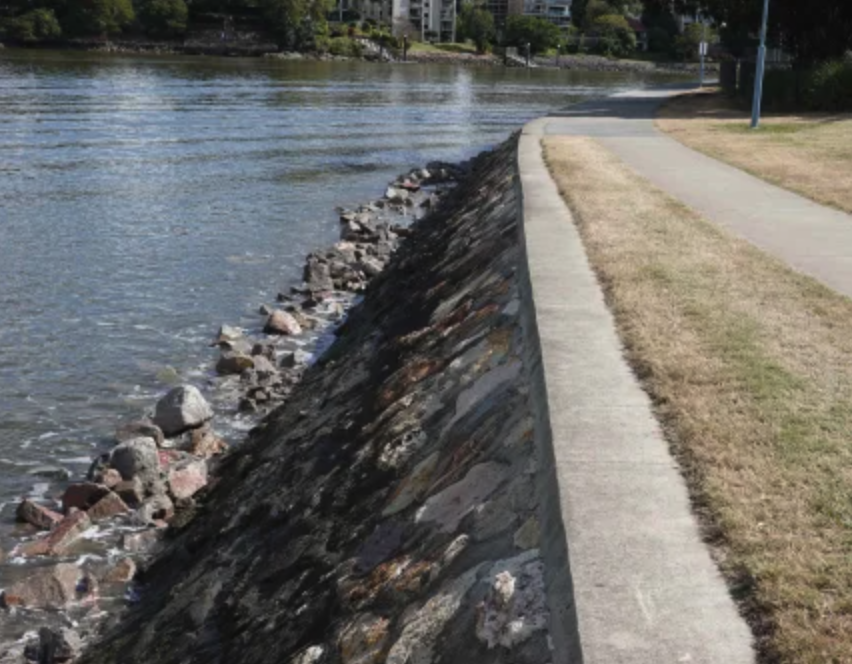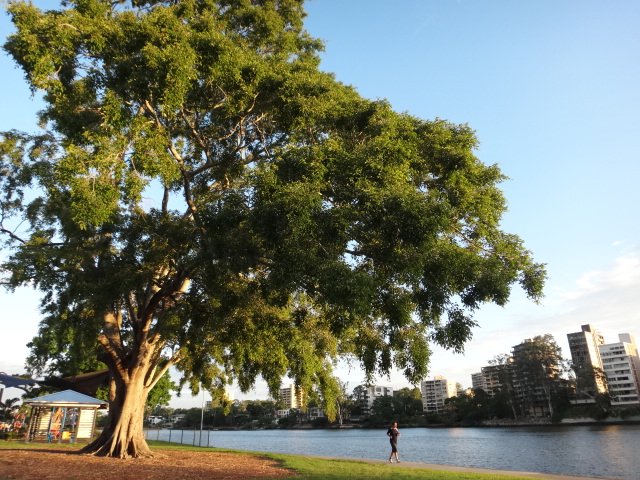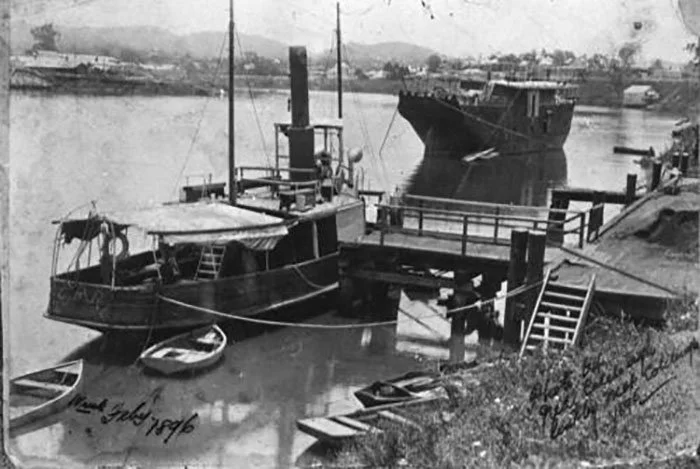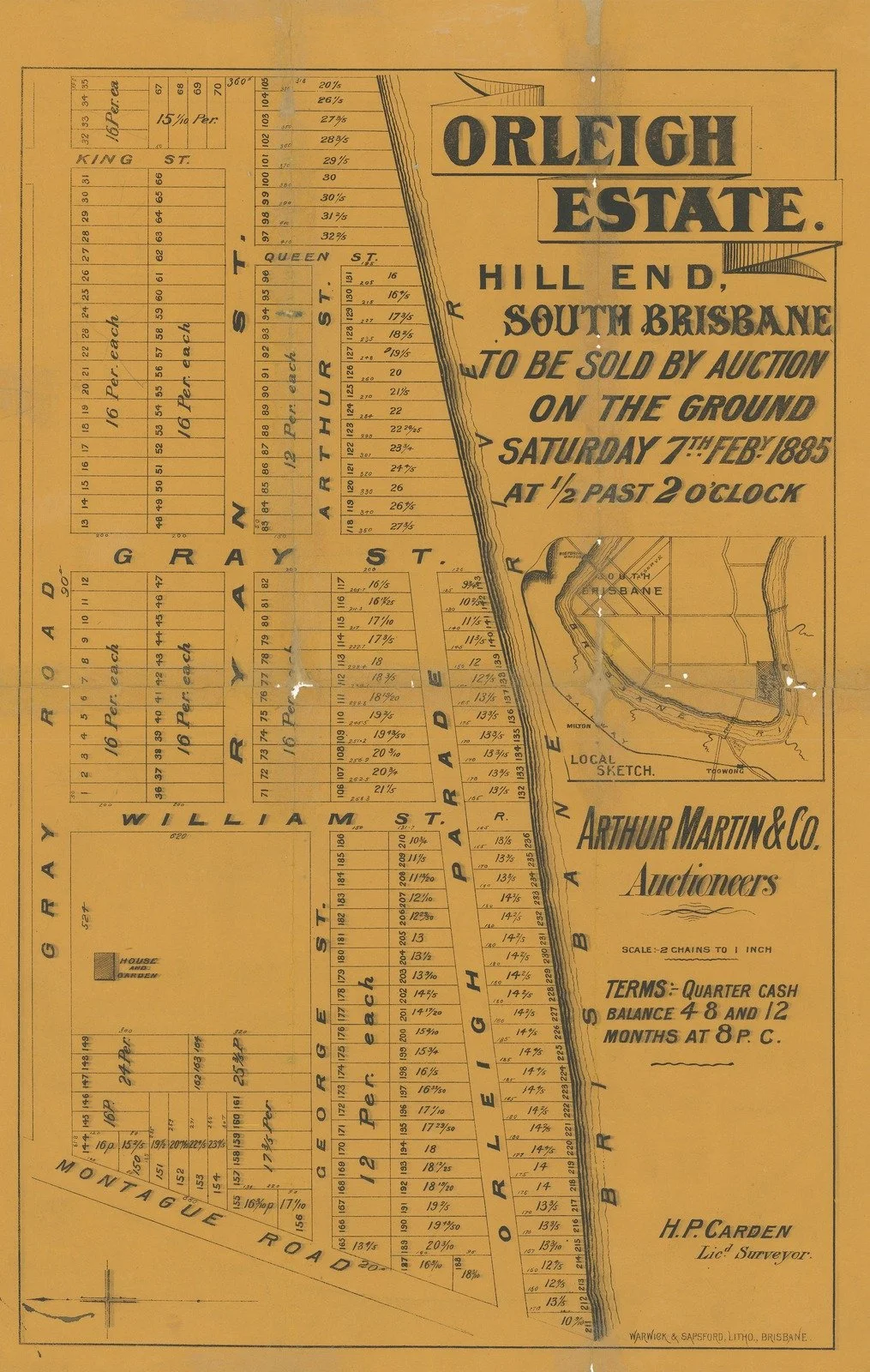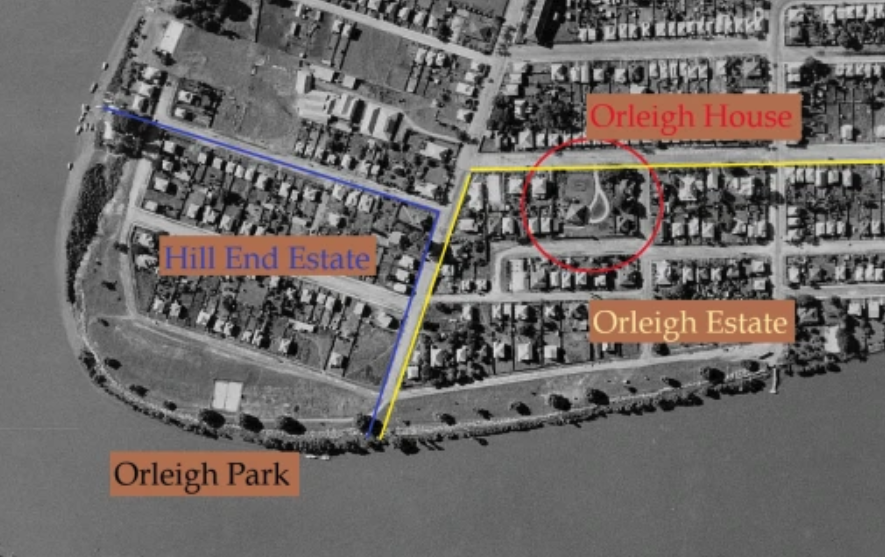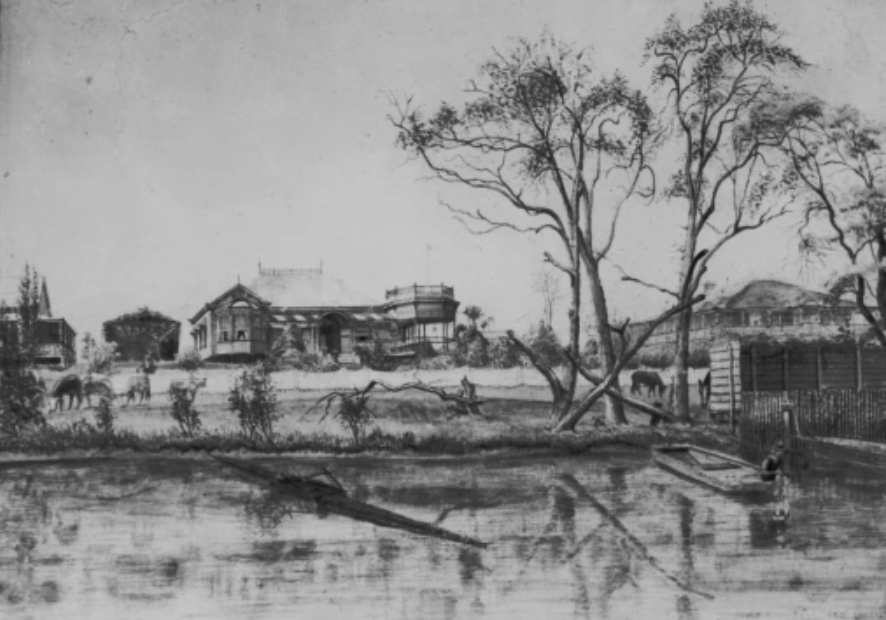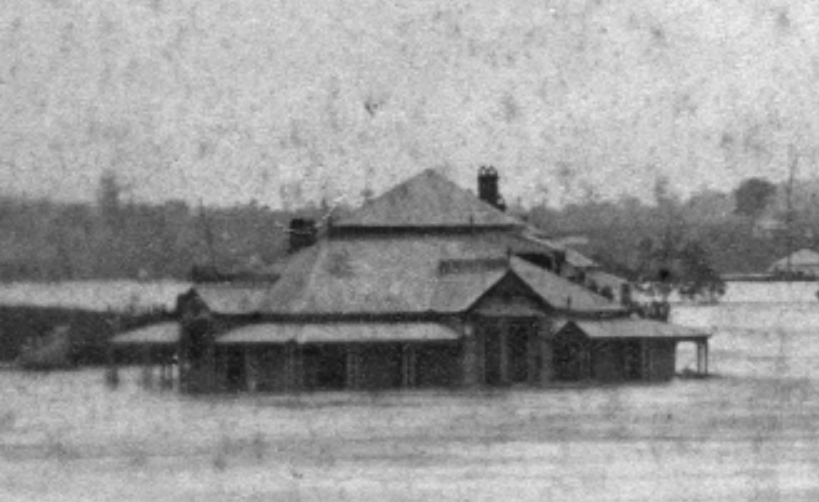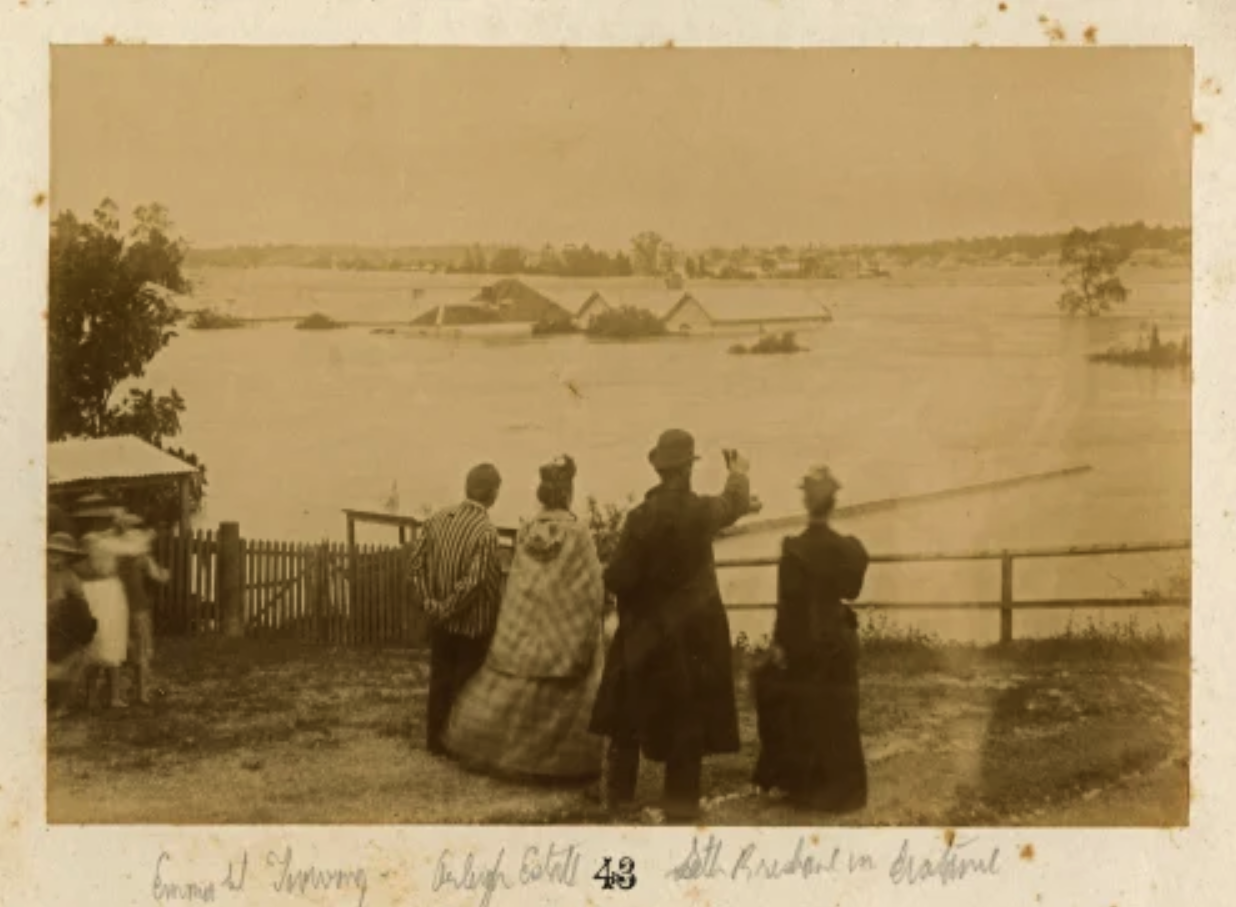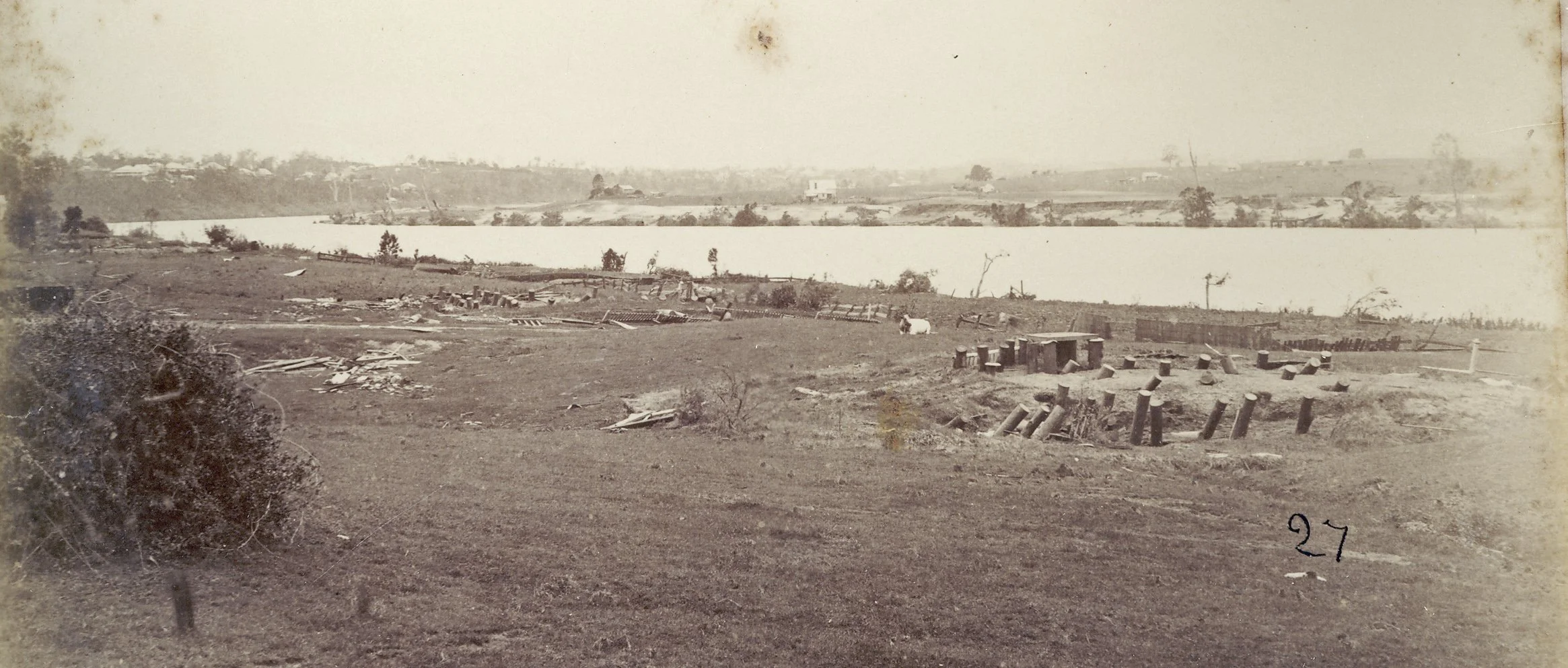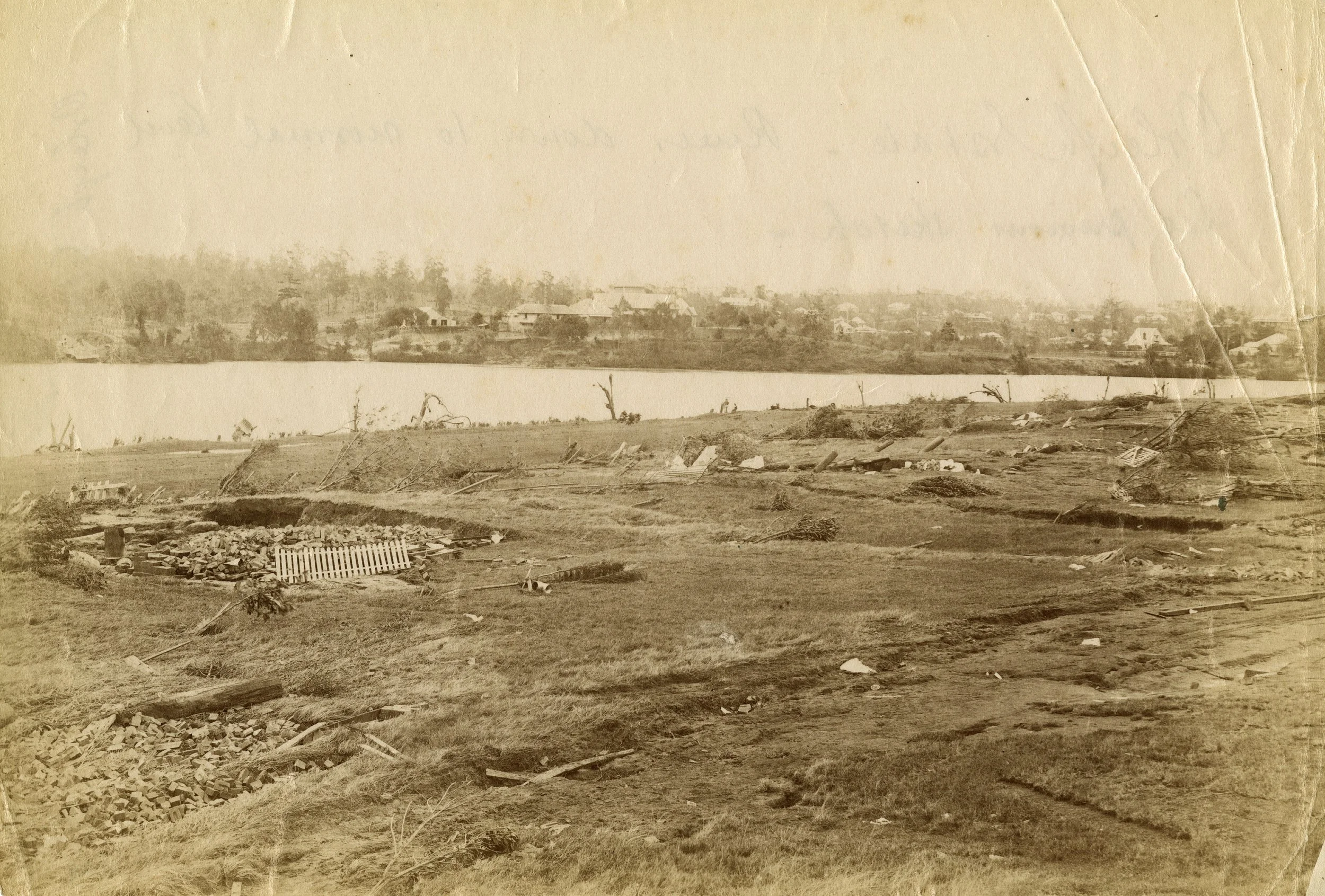The Origins of Orleigh Park
With its huge spreading shade trees and pleasant breezy riverside location, Orleigh Park is understandably a great favourite with many residents and visitors. However, this beautiful park had its origins in tragedy.
Local historian Paul Granville’s has lived in Highgate Hill for over 35 years. He tells the historical story of the birth of Orleigh Park—one of our favourites!
Read the full article, originally published on Paul’s blog Highgate Hill and Its History on 13 June 2020, with research assistance from Nicholas Feros.
Early days
At the time of the arrival of Europeans in the Brisbane area, the river bank at South Brisbane was covered with thick rainforest. This stretched from near where the Victoria Bridge now stands around to Hill End, where the park is located.
The riverbank was described as being a:
“tangled mass of trees, vines, flowering creepers, staghorns, elkhorns, towering scrub palms, giant ferns and hundreds of other members of the fern family, beautiful and rare orchids and the wild passion flower”.
Much of the area was swampy and a fertile hunting ground for Aboriginal people. The fawn-footed melomy called the “corril” or “kuril” in various South Eastern Queensland languages was found here in abundance, giving rise to the name “Kurilpa” or “place of the Kuril” for the peninsula.
Image: Fawn-footed Melomys : Melomys cervinipes (formerly known as Mus cervinipes), 1863, "Mammals of Australia", Vol. III Plate 14.
Selling Orleigh Estate
Two neighbouring landowners, William (Billy) Mortimer Coombe’s market farm and part of John Perril Wilkie’s “Hill End”, held some 34 acres in total. Robert John Gray purchased the land after his marriage in 1870 to Mary Dorsey. The couple established their family home there, naming it “Orleigh”.
The street later built adjacent to their house became known as Gray Road. Also, the bottom part of Hoogley Street was originally called Gray Street.
The property was gradually sold off and subdivided. The house was demolished around 1981.
“Orleigh Estate” went on sale in February of 1885. As was common at the time, the estate took its name from the original house and property. For other examples, see my posts The Hazelwood Estate, Highgate Hill 1885 and The Blakeneys of Highgate Hill
Image: The steamer “Pearl” was made available to bring buyers to the estate by river. The Pearl was to sink during a flood in 1896 with the loss of as many as 57 lives. (State Library of Queensland).
The sale was a great success, with some 600 attending. Prices ranged as high as £160 for riverside allotments, although the average over the 71 allotments sold was £85. Follow up auctions were held in subsequent months.
Image: Orleigh Estate, Hill End, South Brisbane, Arthur Martin & Co, 1885. State Library of Queensland.
One common feature of auction sales of estates at this time was the provision of lunch with accompanying liquid refreshment beforehand. One can’t help speculating how this may have encouraged bidding enthusiasm in what was a boom period for land sales. The sales brochure predicted a doubling of land values in 12 months.
Image: Aerial Photo from 1936 showing Orleigh House still retaining substantial surrounding land, Orleigh Estate and Hill End Estate. (QImagery).
Building houses along the river
Many houses were built along the river in subsequent years. Some, utilising double or even triple allotments, were substantial and expensive dwellings. Whilst residents enjoyed river views and breezes, one complaint was the smell from the nearby tannery in Montague Road operated by Thomas Dixon.
Image: A drawing of riverside houses at Hill End, ca. 1890. (State Library of Queensland).
Something much worse than a bad smell was coming.
There were portents of the future in both 1887 and 1890, when Brisbane experienced floods. Water entered some of the riverside houses at Hill End on both occasions.
It would seem that the lessons of frequent flooding of the Brisbane River over the previous 20 years had been ignored or forgotten.
Image: Hill End Estate river side houses during the 1890 flood, viewed from Toowong. (State Library of Queensland).
Tragedy strikes
In 1893, two separate cyclones led to periods of extremely heavy rain. Brisbane endured three floods separated by just a few weeks. The first of these occurred early in February, when the flood waters reached a height some 3 metres above the 1890 levels.
Image: Looking down at flooded Emma Street, now Glenn Road, Toowong during the 1893 flood. Across the river in the distance are Hill End and Orleigh Estates. (Fryer Library, University of Queensland).
The impact on Hill End was dramatic. An estimated 30 houses were completely washed away on Saturday 4th February, complete with all their contents. Many were described as being “particularly beautiful and costly residences”. In many cases not even the stumps remained. Only one house was left on Orleigh Parade, now Orleigh Street.
Image: Orleigh Estate after the 1893 flood. These houses were never rebuilt. (Fryer Library, University of Queensland)
Many of these houses, along with others being carried down the river, smashed against the pylons of Victoria Bridge which eventually gave way with the northern half of the bridge collapsing. Many other buildings impacted against the bows of ships moored along the river with the constant crunching noise of impacts audible across town.
There was one casualty. Fifteen year old Alexander Freese drowned while showing his father how well he could swim near their house in Ryan Street .
Just two weeks later, a further flood carried away more houses.


The aftermath
Whilst the rebuilding of houses in Hill End took place, it seems that few, if any, were rebuilt on riverside blocks.
From 1894, there are newspaper reports of cricket matches and football games being held at Orleigh Estate on the vacant land.
Image: Orleigh Estate after the 1893 flood showing the scant scattered remains of a row of houses.. (Fryer Library, University of Queensland.
In 1903, the South Brisbane Town Council held a sale of allotments that had been resumed due to the non-payment of rates. One newspaper article commented that “over about one-third of the allotments there hover ghosts of departed joys”. These were vacant Hill End riverside lots abandoned since 1893.
Typical was one triple block of 1 rood 4 perches (approx. 1,115 sq metres) that sold for £8. This is at the end of the park, adjacent to the ferry terminal at the end of Hoogley Street. It would have been purchased for at least £300 in the original 1885 sale. The Council bought it back for £80 in 1915 when the park was established.
A park is born
The idea for the creation of a river-side park originated with the Hill End Progress Association that presented the South Brisbane Town Council with a petition in 1914, signed by 292 local residents.
This was instigated by Major C. A. H. Watson, who never lived to see the park created. After a long career as a teacher and defence force volunteer, he passed away in 1914 whilst still working as the headmaster of the West End Boys School.
With the ongoing urging of the Association, by 1916 all but a few of the properties had been purchased by the Council. A few land owners were holding out for higher prices and their blocks were resumed.
Image: Allotments purchased to create Orleigh Park, plan from 1919. (BCC Archives).
Orleigh Park, or Hill End Park as it was also known, was opened by the Mayor of South Brisbane, Alderman Long, in August 1917. The total cost of purchasing a total of 85 allotments from 27 owners had been £1,200 against an original Council valuation of £1,440.
Orleigh Park in the 1950s
Meanwhile, the Progress Association had wasted no time in organising working bees on Saturdays to start beautifying the rough condition of the park. It was suggested that those who had lost loved ones in the Great War that was still raging could plant a memorial tree.
In June of 1917 they planted 24 weeping fig trees, many of which have survived to provide the park with much of its character and beauty.
It was, however, left in a very basic state for many years due to lack of Council funds.



Orleigh Park today
The park has been inundated numerous times in floods, most recently in 2011.
Erosion at the bend of the river has probably been happening for thousands of years. There was significant loss of land during the 1893 flood. The river wall has seen ongoing development over the years.
With its playgrounds, BBQs and shade, Orleigh Park remains a firm community favourite for gatherings of all types, thanks to the forces of nature and the foresightedness of a group of local residents over a hundred years ago.
Paul Granville is a historian and author of the blog Highgate Hill and Its History.


